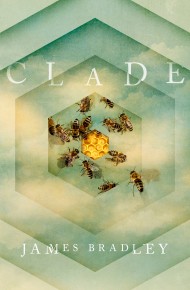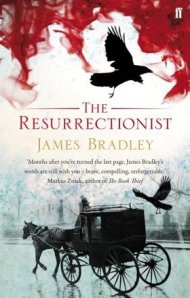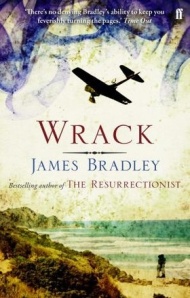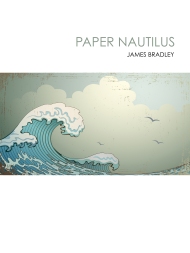A.S. Byatt’s The Children’s Book
 Just the other day I was whingeing about the recent proliferation of unreasonably fat books. After slugging my way through 2666, The Kindly Ones and Wolf Hall in the last few months I’ve been feeling a little put upon by doorstop-sized volumes (not least because I was hoping to knock over the Pevear and Volokhonsky translation of War and Peace
Just the other day I was whingeing about the recent proliferation of unreasonably fat books. After slugging my way through 2666, The Kindly Ones and Wolf Hall in the last few months I’ve been feeling a little put upon by doorstop-sized volumes (not least because I was hoping to knock over the Pevear and Volokhonsky translation of War and Peace some time before the middle of the year, a goal whch has now slipped well and truly from my grasp).
But since my review of one of those books, A.S. Byatt’s The Children’s Book, has just turned up online (it was actually published back in mid-May, and has taken until now to appear on The Australian’s website), I thought it might be worth linking to it, not least because it’s one of the most remarkable and compelling things I’ve read in quite some time.
A decade and a half ago, A.S. Byatt could do no wrong. Possession had just won the Booker, her backlist was selling by the truckload, and her brand of unashamedly intellectual intertextuality was the height of fashion.
I think it’s safe to say that’s no longer the case. Despite the increasing hybridity of form occurring on the margins, contemporary literary fashion vacillates between essentially decadent reinterpretations of genre, from Twilight to Harry Potter and historical pastiches such as The Meaning of Night, and a sort of stripped social realism (though it must be said books such as Helen Garner’s The Spare Room manage to be both examples of a hybridization of fictional and non-fictional forms and stripped back social realism simultaneously).
In such a context The Children’s Book is both striking and somewhat incongruous. A sprawling historical novel, spanning the quarter of a century between 1895 and the aftermath of World War I, it’s also unashamedly a novel of ideas, drawing upon our contemporary fascination with genre and fantasy, and children’s fantasy in particular, and using it as an emotional and intellectual framework to explore a series of deeply troubling questions about writing, sexuality, and, most importantly, the myths of childhood that lie at the heart of so much of children’s fantasy. And if that weren’t enough, it’s also a cultural history of a very particular variety and a fascinating fictional exploration of the hypocrisies of the social reformers of the late-Victorian and Edwardian period.
Laid out in such a fashion I suspect it doesn’t sound particularly attractive. But in fact it’s completely mesmerizing. Yet it’s also a strangely difficult book to get to grips with. Partly this is because it is, as Sam Leith observes in his interview with Byatt, a disconcertingly centreless book. It’s not just that it’s populated by a vast array of vividly realized characters, nor that the characters whose threads one initially assumes the narrative will be built around, Olive Wellwood, Prosper Cain and the two boys, Tom Wellwood and Phillip Warren, quickly become just part of a much larger fabric. Rather it’s the sense that all of the characters are in motion at all times, moving, wanting, debating, and that while there are characters who are in the foreground at any given moment, their presence in the foreground is only a matter of perspective, and a change in perspective might just as easily bring quite different characters into focus.
But it’s also a function of the novel’s density and richness of allusion and implication. Any good novel, just by virtue of its scale, contains within itself a complex web of meanings. And while the relationship is not linear, as a general rule it’s safe to assume that the longer the novel, the more complex these meanings become. Yet with The Children’s Book their complexity takes on an almost Borgesian quality, a sense of multiplying, and endlessly branching possibilities. In my review I almost described it as prismatic, but refrained, because that’s not quite the right word, not least because the book is so deeply, and darkly organic. Rather the proper metaphor is the one Byatt herself uses in describing the fairy stories written by Olive (herself a version of E. Nesbit) that of the underground labyrinth, and of the seemingly magical and infinite power of story:
“The stories in the books were, in their nature, endless. They were like segmented worms, with hooks and eyes to fit onot the next moving and coling section. Every closure of plot had to contain a new beginning. There were tributary plots, that joined the mainstream again, further on, further in. Olive plundered the children’s stories sometimes, for publishable situations, or people, or settings, but everyone understood that the magic persisted because it was hidden, because it was a shared secret.
“All of them, from Florian to Olive herself, walked about the house and garden, the shrubbery and the orchard, the stables and the woods, with an awareness that things had invisible as well as visible forms, including the solid kitchen and the nursery walls, which concealed stone towers and silken bowers. They knew that rabbit warrens opened into underground lanes to the land of the dead, and that spider webs could become fetters as strong as steel, and that myriads of transparent creatures danced at the edge of the meadows, and hung and chattered like bats in the branches, only just invisible, only just inaudible. Any juice of any fruit or flower might be the lotion that, squeezed on eyelids, touched to tongue or ears, would give the watcher or listener a way in, a power of inhuman sensing. Any bent twig might be a message or a sign. The seen and the unseen world were interlocked and superimposed. You could trip out of one and into the other at any moment.”
My original review of The Children’s Book is in The Australian. If you’d like to read more, I’d recommend Elizabeth Lowry’s excellent and insightful review in the TLS, or Alex Clark’s in The Guardian. Or for a rather more sceptical view, Adam Mars-Jones’ review in The Observer.
Break text










